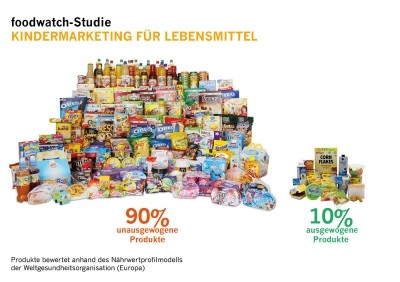Legal loopholes allowing ‘junk food’ ads to kids must be closed: British Heart Foundation

Mike Hobday, BHF director of policy, said: “Regulations for TV and online advertising in the UK are weak. Loopholes in the system mean that every day millions of children are exposed to sophisticated marketing techniques specifically designed to lure them into unhealthy eating habits.”
As part of its Heart Month this February, the charity surveyed 2,100 parents with children under the age of 16 in the UK and found 70% had been pestered by their children to buy junk food they had seen on TV. For 43% of the parents this happened at least once a week.
Some 39% of parents said they thought ‘junk food’ TV adverts made it difficult for them to ensure their children had a healthy diet.
The BHF said this demonstrated the detrimental impact this advertisement was having.
“We cannot allow companies to continue exploiting holes in the system at the expense of our children’s health. The government must act now to help give children a stronger chance at fending off future heart disease,” Hobday said.
'Weak' regulation
The BHF said currently there were too many ‘junk food’ adverts slipping through the regulatory net into broadcast slots between popular family shows, as well as online.
Under the children's programming restrictions in the UK, advertisements are regulated by two points: the percentage of children watching the programmes around the advert breaks and the nutrient profiles of the foods themselves based on a score system of the benefits and possible harm to health. The BHF is now calling on this to be extended to 'family programme' slots, typically from 7-9pm.
Policy officer Amy Smullen told us the BHF was seeking a "blanket ban" on advertisement of foods outside of this approved nutrient profile during this broadcast slot, regardless of the percentage of children in the audience.
"We don't want to focus too much on this idea of percentages. Even if there was just 5% of children watching, there are still children watching. We're looking for a blanket ban before 9pm."
The net slipping through the net
Smullen conceded that online advertisement was a slippery area to pin down to policy, and this blurriness in itself illustrated the problem.
"If we as adults are having trouble distinguishing between entertainment and advertisment, children have no chance."
She said firms using social media were currently conducting marketing activities they would never get away with under the broadcasting regulation. However, how to deal with this on a regulatory level was problematic since clearly time restrictions would not be appropriate. Instead she suggested the same nutrient profile system be applied.
Asked if this policy line would not lead to a blanket ban on all marketing to children, she said she preferred to focus on the positives saying there were lots of healthy products for children out there.
"We're not against all types of advertising. Let's think about what they can advertise, and the influence they can have over children."
In 2011 the charity released its report The 21st Century Gingerbread House, which it said revealed the tactics used by food companies to market to children online.
Netherlands crackdown?
The Netherlands recently extended its ban on advertisement to children to include under 13s, increasing this age limit from the previously set age of seven. However, consumer groups criticised the move as not going far enough – falling to take into account the impact of packaging, point-of-sale material, online games and in-school activities – and said the nutritional profile that dictated which foods were included was not strict enough.





















